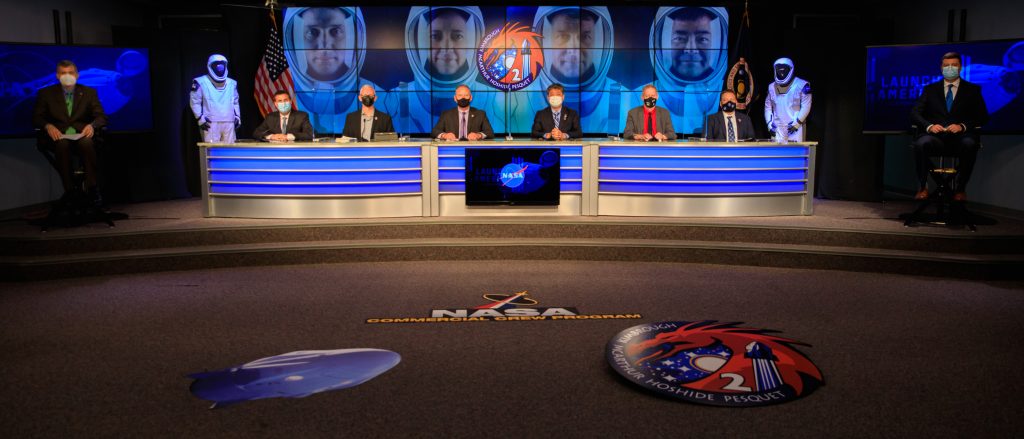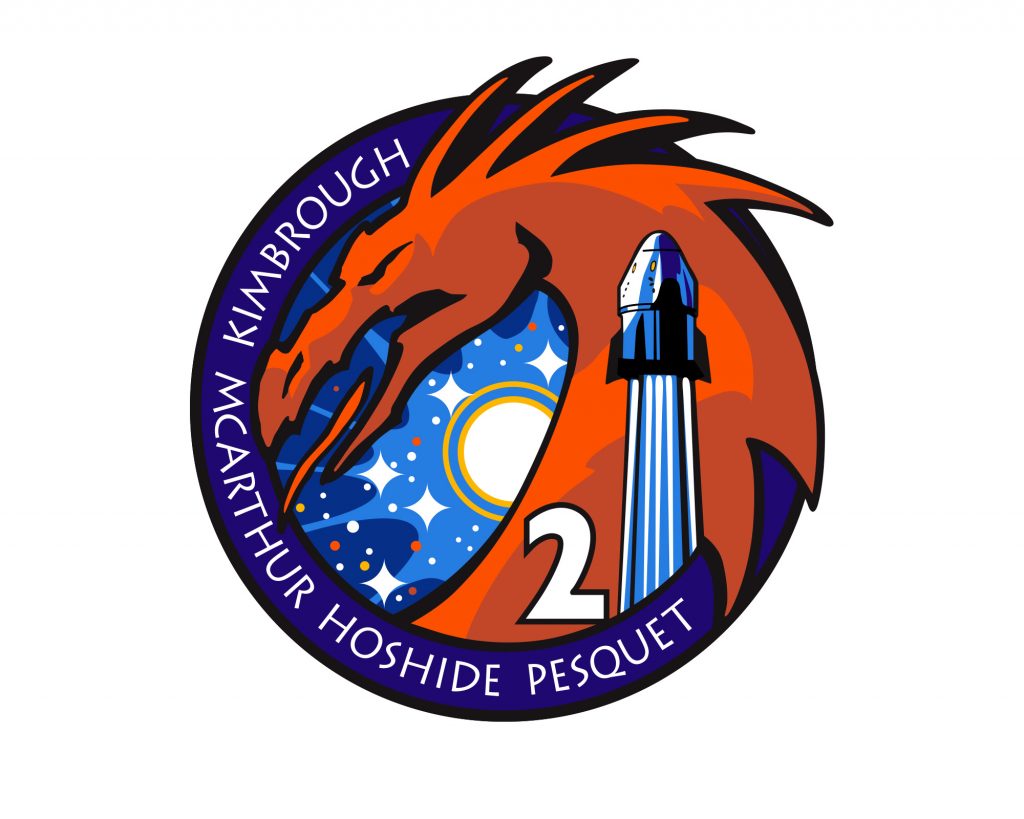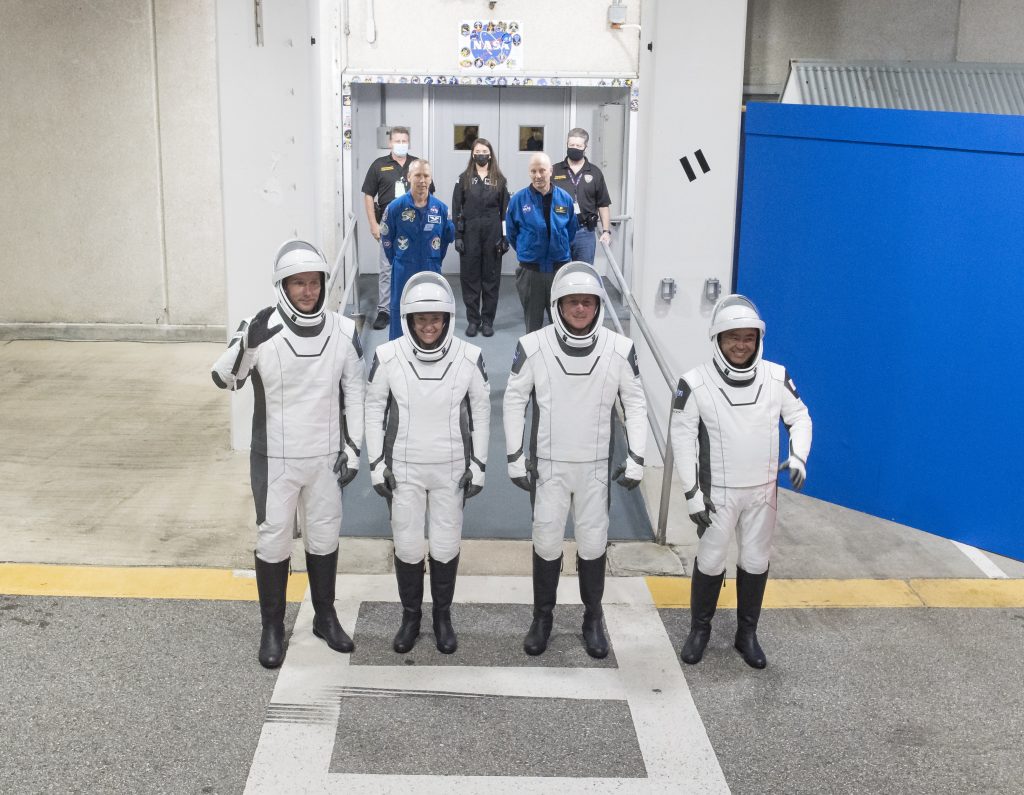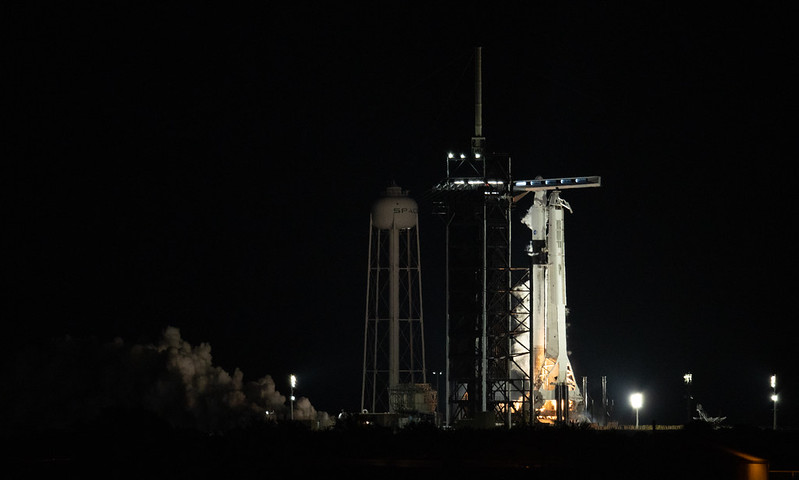
NASA and SpaceX now are targeting 5:49 a.m. EDT Friday, April 23, for the launch of the agency’s Crew-2 mission to the International Space Station due to unfavorable weather conditions along the flight path on Thursday.
Although conditions around the launch site were expected to be favorable for liftoff, mission teams also must consider conditions along the flight path and recovery area in the unlikely event of a launch escape.
For a launch April 23, the U.S. Space Force 45th Weather Squadron predicts a 90% chance of favorable weather conditions at the launch pad for liftoff of the Crew-2 mission based on Falcon 9 Crew Dragon launch weather criteria. Conditions also are expected to improve along the flight path and recovery area for the mission. The primary weather concerns for the launch area will be liftoff winds.
NASA’s SpaceX Crew-2 mission coverage is as follows (all times Eastern):
Wednesday, April 21
8:30 a.m. – Administrator Countdown Clock Briefing with the following participants:
- Steve Jurczyk, acting NASA administrator
- Bob Cabana, Kennedy center director
- Hiroshi Sasaki, vice president and director general, JAXA’s Human Spaceflight Technology Directorate
- Frank de Winne, manager, International Space Station Program, ESA
- NASA astronaut Jasmin Moghbeli
9:15 a.m. – NASA Social Event on the Kennedy Space Center’s Facebook and YouTube accounts.
Friday, April 23
1:30 a.m. – NASA Television launch coverage begins. NASA Television will have continuous coverage, including docking, hatch opening, and welcome ceremony.
7:30 a.m. (approximately) – Postlaunch news conference with the following participants:
- Steve Jurczyk, acting NASA administrator
- Kathy Lueders, associate administrator, Human Exploration and Operations Mission Directorate, NASA Headquarters
- Hiroshi Sasaki, vice president and director general, JAXA’s Human Spaceflight Technology Directorate
- Frank de Winne, manager, International Space Station Program, ESA
- SpaceX representative
Following a launch Friday, the Crew Dragon carrying NASA astronauts Shane Kimbrough and Megan McArthur, along with JAXA (Japan Aerospace Exploration Agency) astronaut Akihiko Hoshide, and ESA (European Space Agency) astronaut Thomas Pesquet is scheduled to dock to the space station at about 5:10 a.m. Saturday, April 24.
With arrival of Crew-2 Saturday, NASA and SpaceX will continue to target the undocking and return to Earth of Crew-1 for Wednesday, April 28, after an approximate four-day shift change. Crew-1 NASA astronauts Michael Hopkins, Victor Glover, and Shannon Walker, along with JAXA astronaut Soichi Noguchi, will undock Crew Dragon Resilience at 5 a.m. and splashdown off the coast of Florida 7.5 hours later at about 12:35 p.m., after 164 days in space. Their return date and time are dependent on having a healthy spacecraft and favorable weather in the selected splashdown zone.
Follow along with launch activities and get more information about the mission at: http://www.nasa.gov/crew-2.
Learn more about commercial crew and space station activities by following @Commercial_Crew, @space_station, and @ISS_Research on Twitter as well as the Commercial Crew Facebook, ISS Facebook and ISS Instagram accounts.








